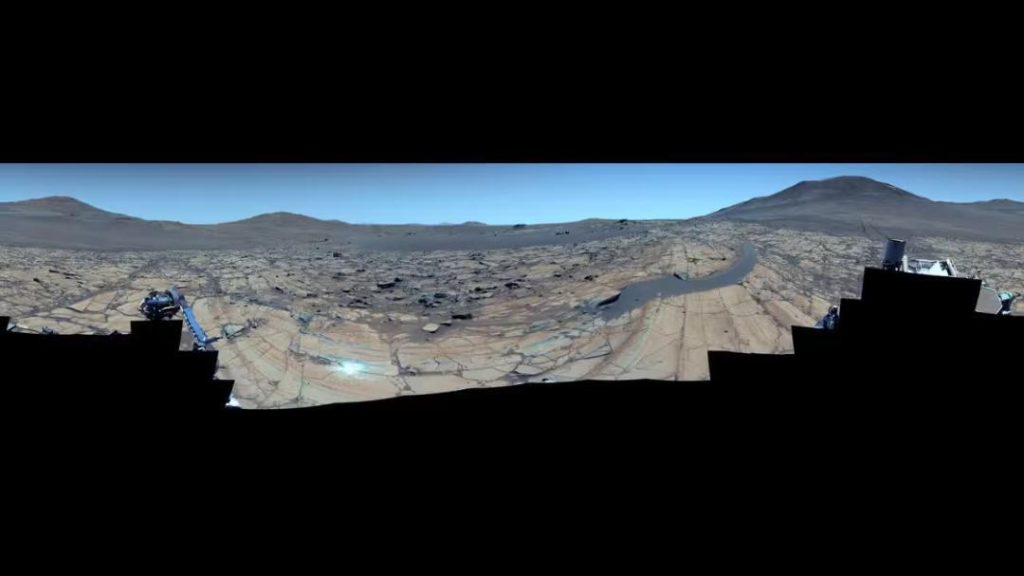
Perseverance Rover Captures Clear Image of Mars from Jezero Crater
NASA’s Perseverance rover has once again proved its capabilities by capturing a stunning panoramic view of Jezero Crater from a site called Falbreen on May 26. The rover used its Mastcam-Z camera to take 96 high-resolution photos, which were then combined to create a vibrant mosaic that showcases the Martian landscape in unprecedented detail.
The resulting image is a breathtaking vista that stretches across the Jezero Crater rim, revealing a single boulder, far-off hills, and rippled sands. But what’s even more remarkable is the vibrant blue hue of the Martian atmosphere that’s visible in enhanced-color versions of the image.
The Perseverance rover has been exploring Jezero Crater since its landing in February 2021, and it has been sending back a steady stream of fascinating images and data about the Martian environment. The rover’s primary mission is to search for signs of past or present life on Mars, but it’s also providing scientists with valuable insights into the planet’s geology, climate, and potential habitability.
The Jezero Crater is a 45-kilometer-wide impact crater that was once home to a lake, and its rim offers a unique vantage point for studying the Martian landscape. The Perseverance rover has been exploring the crater’s rim and interior, and its recent panoramic view is one of the most detailed and captivating images yet taken on the Martian surface.
The image is not only visually stunning but also provides scientists with valuable information about the Martian geology and environment. The boulder that’s visible in the image is likely to be a remnant of the crater’s formation process, while the far-off hills and rippled sands offer insights into the planet’s geological history and the effects of wind and water erosion.
The enhanced-color versions of the image, which were created using specialized software, also reveal the vibrant blue hue of the Martian atmosphere. This is because the Martian atmosphere is much thinner than Earth’s, and it scatters shorter wavelengths of light more effectively, giving it a blueish tint.
The Perseverance rover’s ability to capture such high-quality images is a testament to its advanced technology and the hard work of the NASA team that designed and built it. The rover is equipped with a range of cameras, including the Mastcam-Z camera that captured the panoramic view, as well as a variety of scientific instruments that are designed to search for signs of life and study the Martian environment.
The Perseverance rover is expected to continue exploring Jezero Crater and the surrounding area for many months to come, and it’s likely to send back even more stunning images and data that will help scientists to better understand the Martian environment.






